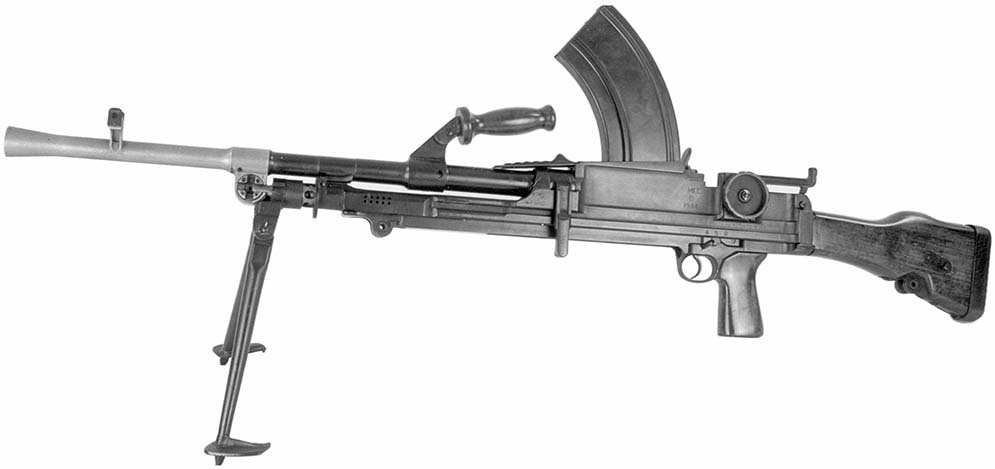By Dan Shea and Bill Vallerand
In the Korean War, the British, Canadian and Australian troops used the 303 Caliber Bren of whatever MK was issued. Eyewitness accounts include many MK III and MK IV models in the hands of these troops. The North Koreans considered the Bren to be a great prize to capture, and to reuse against the UN troops. These were issued with standard 30 round magazines. Bren tripods were scarce, and not usually used when issued.
The troops considered the Bren to be a reliable and effective base of fire. While the Americans used the BAR, and were pleased with it, the Bren was considered a more reliable and effective weapon- the major advantage of course was the quick change barrel. This enabled the operator to have a more continuous rate of fire- a good thing in the event of the Chinese human wave attacks. The BAR is an “Automatic Rifle” while the Bren is a “Light Machine Gun”.
One of the major advantages of the Bren system, is the gas port adjustment. This adjustment is there for when the gun is dirty or extremely cold. As the gas port got dirty, or the internals of the gun got “Sluggish”, changing to a larger gas port put more volume of gas into the system. This added pressure overcame many environmental difficulties including frigid temperatures, carbon build up, and the inevitable mud that faces every aspect of the lives of the infantryman.

Barrel removed from the Bren, with the operating slide and bolt showing position.
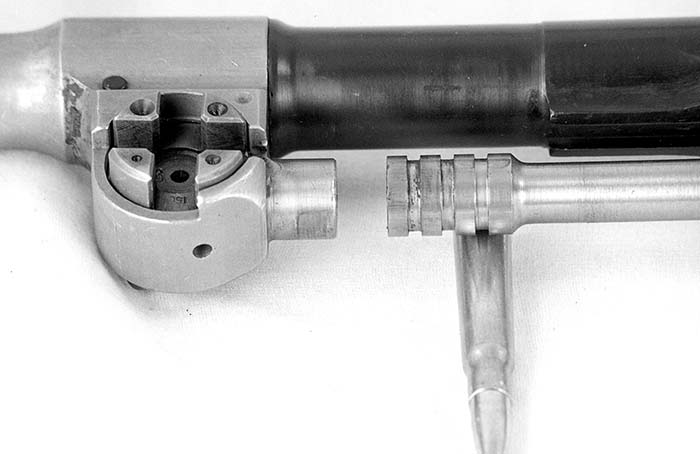
Close up of gas piston and gas block showing where piston receives gas. 
Barrel fully seated with gas block lock in places. 
Close up of gas cylinder with lock extension. 
Gas block, left hand side without adjustment piece. 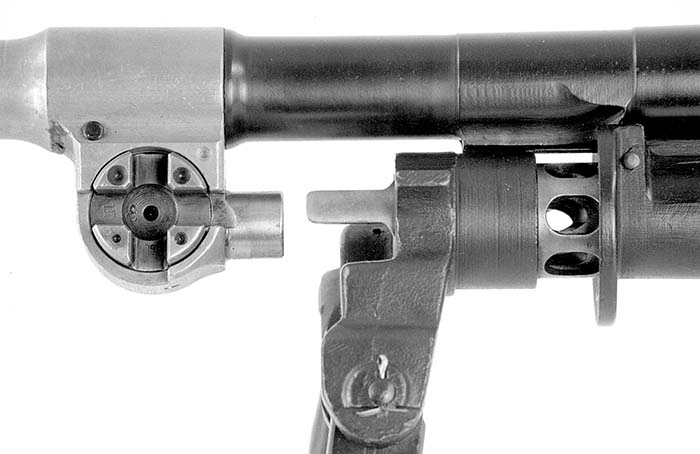
Barrel partially removed showing relationship between gas block and receiver extension. 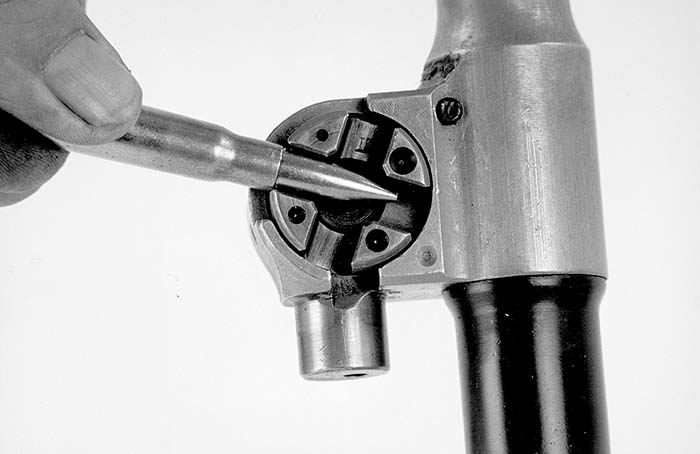
Adjustment block being rotated to increase the gas port size. 
Gas block, right hand side with adjustment piece in place. 
Gas block, left side, showing gas escape holes to the right (A), and Gas block lock (B). 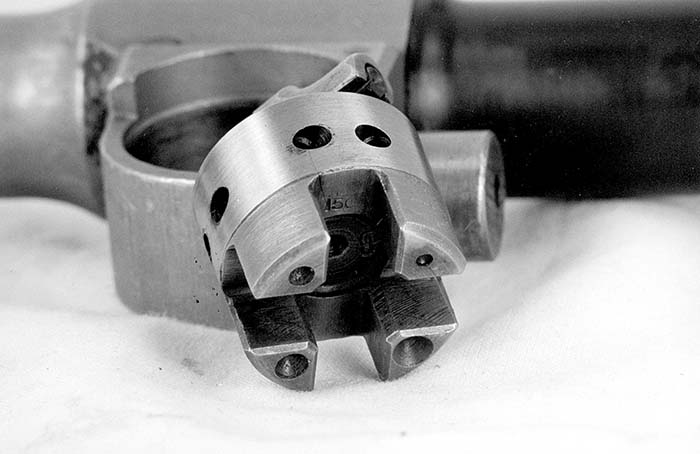
Adjustment block removed to show dual ports for gas exit.
| This article first appeared in Small Arms Review V4N12 (September 2001) |



